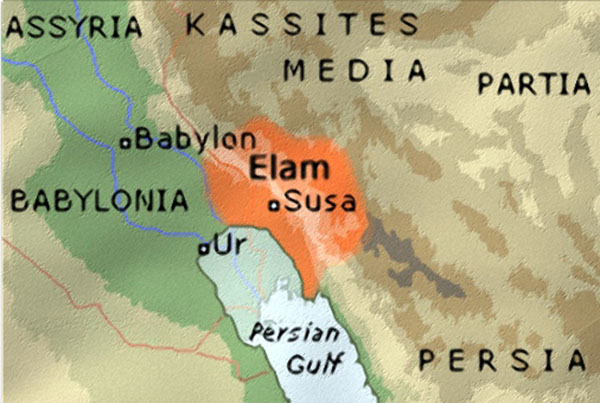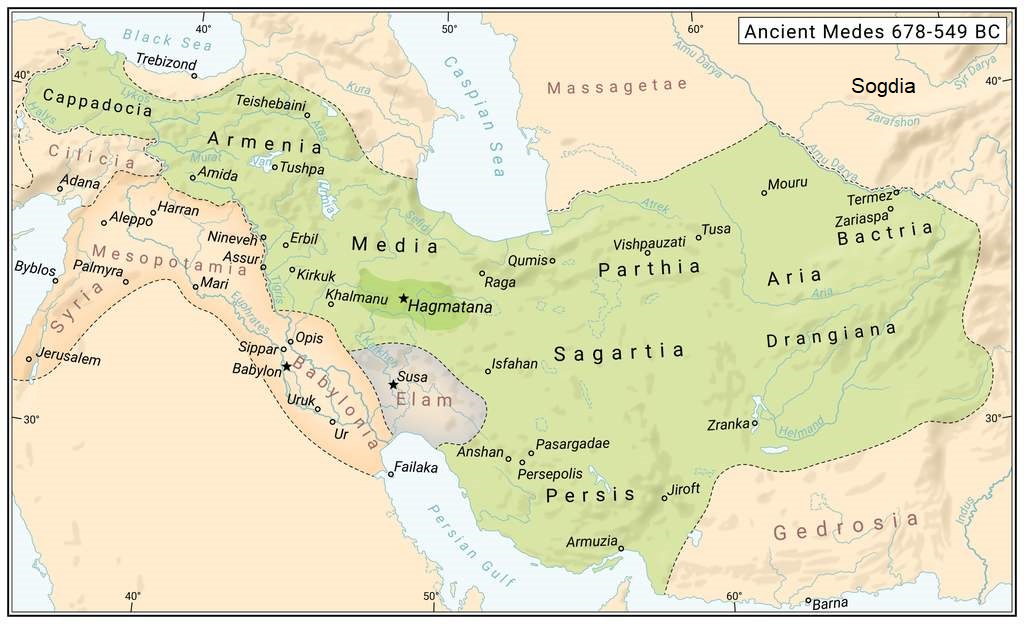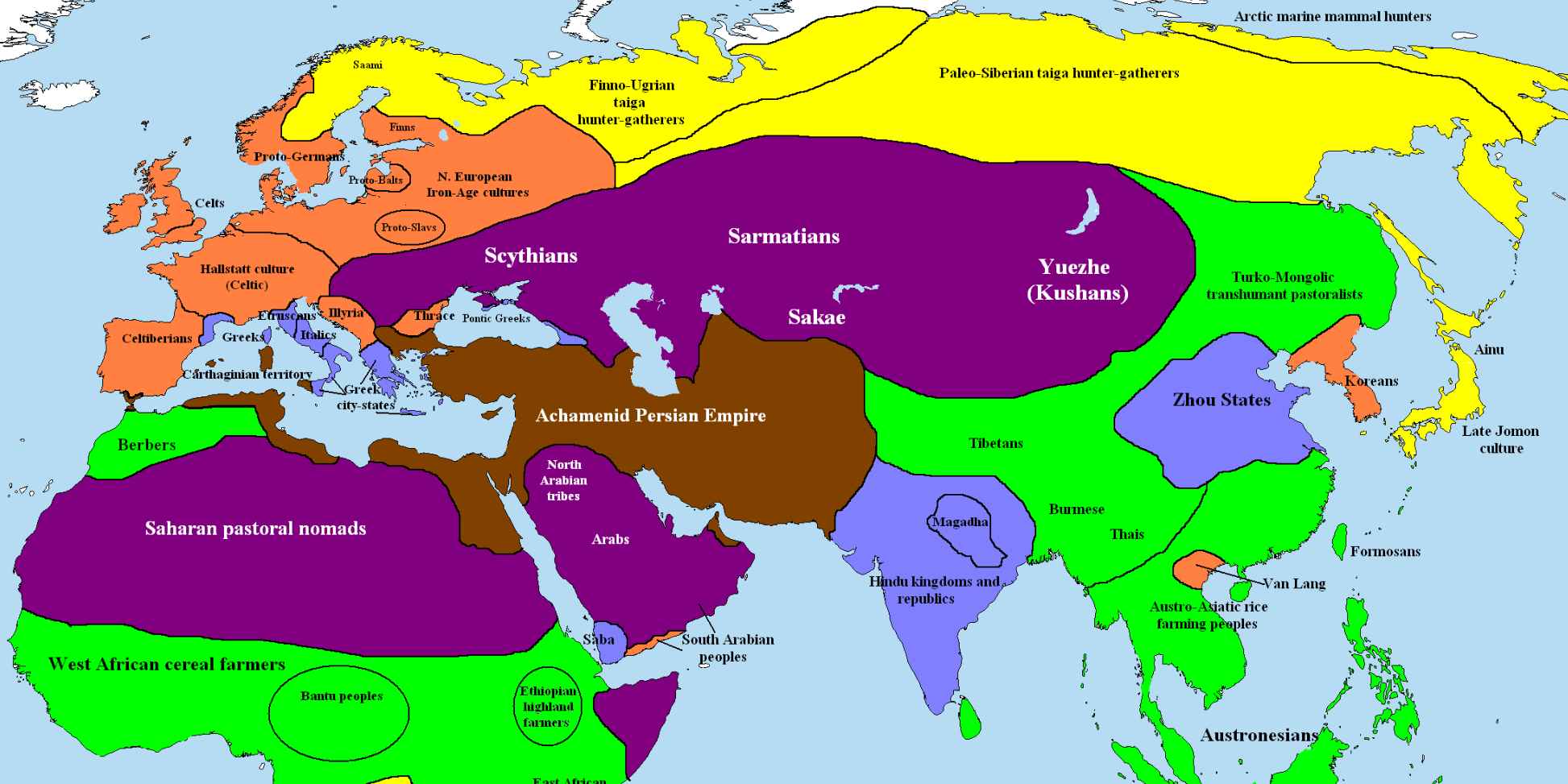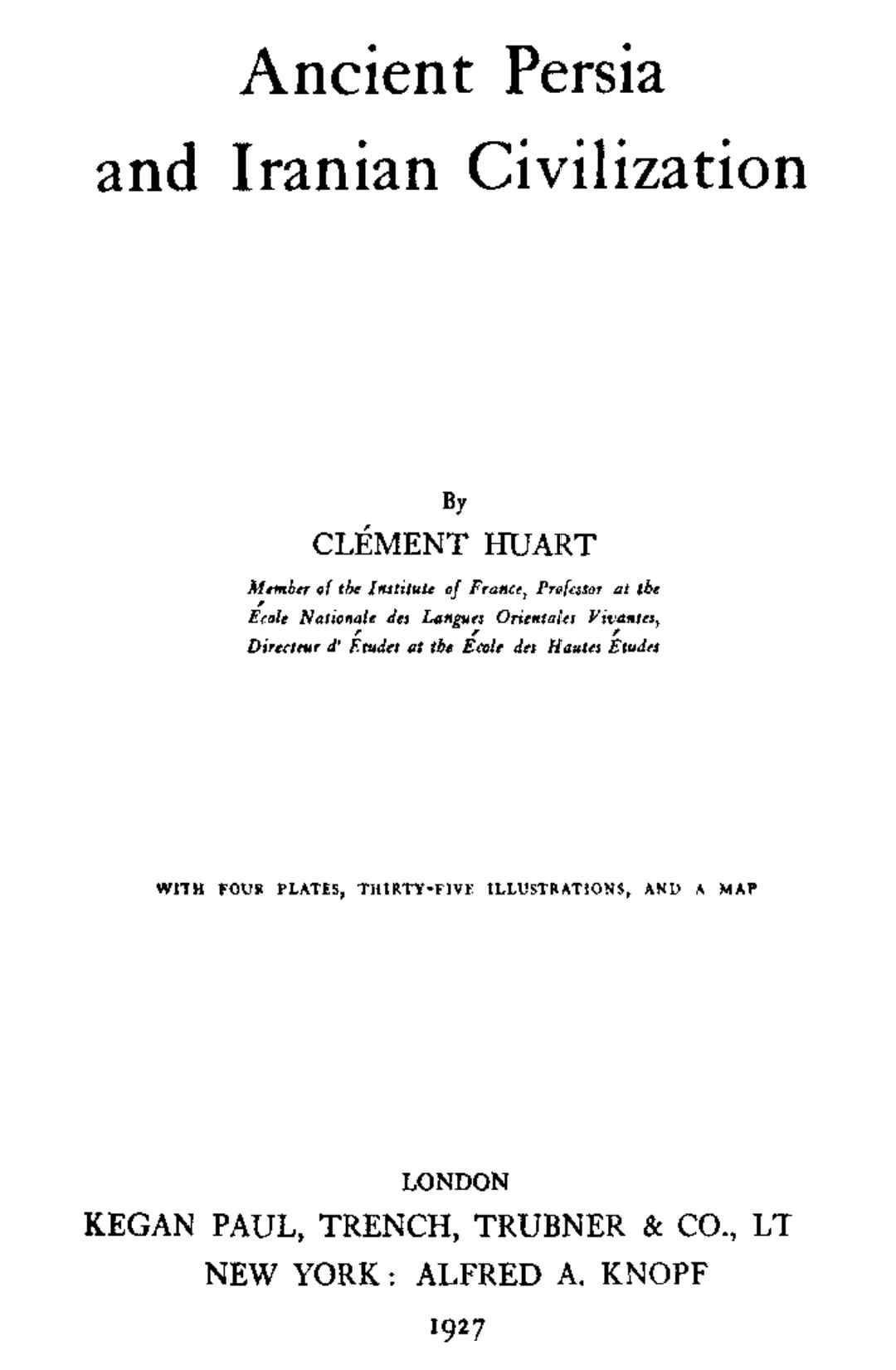Iran (Before Arab Conquest)
When we talk about Iran, we are not limiting ourselves to the geographic boundary of the present-day Islamic Republic of Iran because the boundary fluctuate throughout history.
Iran started out as a collection of uneventful tribes living on the Iranian Plateau in prehistoric time. In 550 BCE a Persian empire was formed. It was the largest empire the world had ever seen at its time, the Achaemenid Empire. It spanning from the Balkans (part of present day Europe) and Africa in the west and to the Indus Valley (present day Pakistan) in the east.
Among the early people in and around the Iranian Plateau, a civilization called Elam was developed east of Mesopotamia. It probably emerged around 3200 BCE and had frequent contact with people in Mesopotamia (such as the Sumerians, Babylonians and Assyrians). Below is a map showing the location of Elam.

Another civilization on the Iranian Plateau is called Media (people lived in Media were called Medes). Not much is known about the Medes because they left no written records. What is known about them come from foreign sources of surrounding areas. The Medes were under the domination of Assyria. Around 609 BCE a Median king named Cyaxares formed alliance with Babylonia together with other countries and overthrew Assyria. Media then became an independent state. At that time, Media, Babylonia, Lydia (at present-day Turkey), and Egypt were the four major powers of the region. Below is a map showing the boundary of the Medes around 585 BCE:

Beginning as early as the 9th century BCE, and with increasing impact in the late 8th and early 7th centuries BCE, groups of nomadic warriors originated from the Eurasian Steppe entered Iran. Dominant among these groups were the Scythians (described in details on the West Nomads page). A Greek historian, Herodotus (around 450 BCE), spoke in some details of a period of Scythian domination in this region, the so-called Scythian interregnum in Median dynasty history. His dating of this event remains uncertain, but traditionally it is seen as falling between the reigns of Phraortes and Cyaxares and as covering the years 653 to 625 BCE. According to Herodotus, Cyaxares’ attack on Assyria was interrupted by a massive incursions of Scythians. It took Cyaxares twenty-eight years for him to drive these nomads out before he could return to his plans for conquest in Mesopotamia. The Scythians later settled down in the Parthia region of the Iranian Plateau (the location of Parthia is shown in the above map).
There was another group of nomads from Eurasian Steppe that settled in Iran. They were called the Persians and lived in a region called Persis (the location of Persis is shown in the above map). Persis is also called Fars, and is located at the southwest of present-day Iran. The Persians are thought to have initially migrated from the Steppe and then settled in Persis in the early 1st millennium BCE. They spoke a branch of the Indo-European language (Indo-Iranian) that was related to the Indo-Aryan language in ancient India. In 550 BCE, a great king of Persis called Cyrus the Great conquered many surrounding nations and found the Achaemenid Empire. Below is a map showing the Achaemenid Empire (in brown) relative to other powers of the world around 500 BCE:

The Achaemenid Empire lasted for 220 years until it was conquered by Alexander the Great of Macedon in 330 BCE.
Alexander's empire broke up shortly after his death in 323 BCE. There was a power struggle among his generals. One of them, Seleucus I Nicator, became the ruler of Anatolia, Syria, Mesopotamia, and the Iranian Plateau. The state he established on these territories, the Seleucid Empire, was one of the major powers of the Hellenistic world. After the death of Seleucus I Nicator the Seleucid Empire was in decline. The territories were overcome by the Roman Republic and Parthian Empire in the late second and early first centuries BC. Below is a map showing the territories of the Seleucid Empire and Parthia (which at that time was a small nation) around 200 BCE:

The Parthian Empire started as the Arsacid dynasty of Parthia. Arsaces I was the first king of Parthia, ruling from 247 to 217 BCE. He rebelled against the Seleucid Empire. During his reign, he consolidated his rule and expanded the territories. His great-grandnephew Mithridates I (reigned 165-132 BCE) drove the Seleucids out of Iran and Mesopotamia. His nephew, Mithridates II (reigned 124-91 BCE), consolidated the territories. Below is a map of the Parthian Empire at the time of Mithridates II:

Around 224 CE Ardashir I, a descendant of Sassan, defeated the Parthians. This is considered the beginning of the Sassanian Empire. Ardashir I was originally the ruler of Persis, which is the same region ruled by Achaemenid kings before Cyrus the Great expanded the empire. Thus, the kings of the Sassanian Empire considered their empire as a continuity of the Achaemenid Empire. The Sassanian Empire played an important role in developing and refining Persian culture. In 651 CE, the Sassanian Empire was conquered by the Rashidun Caliphate. The Rashidun and subsequent caliphates adopted many aspects of the Persian culture.
Below are books on early Iran:
(i) Ancient Persia and Iranian Civilization


(iii) The Heritage of Persia (file size approximately 17 MB)
